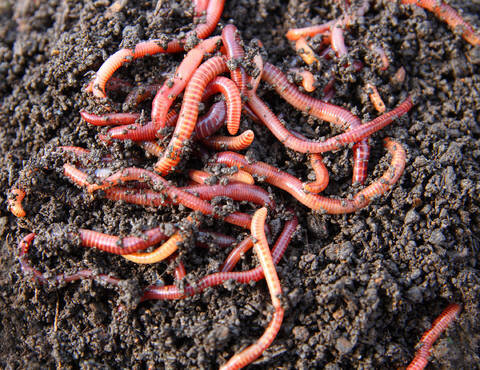Composting red worms: Tips for care a worm bin
Composting red worms: Tips for care a worm bin
Blog Article
Using Red Wigglers for Reliable Organic Garbage Disposal
These worms not just improve waste disintegration yet also yield important worm castings, which can dramatically boost soil health and wellness. Comprehending the subtleties of setting up a successful worm container and maintaining an ideal environment is important for maximizing their advantages.
Advantages of Using Red Wigglers
One of one of the most compelling advantages of using red wigglers for natural waste disposal is their exceptional performance in composting. These worms, medically called Eisenia fetida, are especially adjusted for damaging down natural products, allowing them to process waste up to two times their body weight every day. This rapid decomposition not just accelerates the composting procedure but also produces nutrient-rich worm spreadings that dramatically boost dirt top quality.
In addition, red wigglers add to a decrease in garbage dump waste. By drawing away natural materials from garbage dumps, they help lessen methane exhausts-- a potent greenhouse gas. This environmental benefit is important in the battle against environment adjustment.
Moreover, red wigglers are low-maintenance and can prosper in numerous environments, making them available for both beginner and experienced composters. Their ability to reproduce swiftly makes sure a stable populace, assisting in continuous waste processing.
Establishing Your Worm Container
Developing an effective worm bin is crucial for making the most of the benefits of composting with red wigglers. The very first action is choosing an ideal container. A bin constructed from plastic or timber, with an ability of 10 to 20 gallons, is ideal. Make sure the bin has sufficient drain openings to stop excess dampness, as red wigglers flourish in a damp but not soggy environment.
(Lake James Bait)Following, prepare the bedding product, which offers as the worms' habitat and food source. The container ought to be put in a dark, temperature-controlled area, ideally in between 55 ° F and 77 ° F, to maintain worm task.
Once the bin is set up, present the red wigglers, permitting them to adapt to their new environment. It's vital to keep track of moisture degrees and temperature on a regular basis. A properly maintained container will certainly not just support the wellness of the worms yet likewise promote efficient decay of natural waste. By complying with these guidelines, you can create a growing community that adds to lasting waste management.
(Lake Rhodhiss Bait)
What to Feed Red Wigglers
An understanding of the suitable diet for red wigglers is vital for maintaining a healthy worm population and maximizing composting efficiency. These products not just supply necessary nutrients yet likewise contribute to the wetness equilibrium within the worm bin.
It is crucial to prevent specific foods that can damage the worm populace. Red wigglers should not be fed meat, milk items, oily foods, or processed items, as these can bring in insects and create unpleasant odors. red wigglers. Furthermore, citrus fruits and spicy foods need to be minimized, as their acidity can be harmful to worms
To promote optimum digestion, food ought to be sliced into smaller items, helping with quicker failure and consumption. Presenting food in small amounts is also crucial; overfeeding can lead to anaerobic problems and draw in undesirable insects. Monitoring the worm bin for food intake prices will certainly assist make certain that red wigglers are obtaining an ample diet plan while maintaining an efficient composting atmosphere. Correct feeding methods are essential for fostering a flourishing environment within the worm bin.
Maintaining Your Worm Environment
A well-maintained worm environment is necessary for the health and wellness and productivity of red wigglers. To make certain ideal conditions, it is important to keep track of temperature, wetness, and oygenation within the worm container. Red wigglers thrive in a temperature series of 55 to 77 levels Fahrenheit. Exceeding this array can worry the worms, so it is essential to position the bin in an ideal location far from direct sunshine and severe temperature levels.
An excellent rule of thumb is to keep dampness at roughly 70% to 80%. If the bed linen comes to be as well wet, it can lead to anaerobic conditions that are hazardous to the worms.

Utilizing Worm Castings in Gardening
Rich in nutrients and check my blog advantageous microorganisms, worm spreadings serve as a remarkable natural plant food for horticulture. Created via the digestion processes of red wigglers, these spreadings include a range of vital nutrients, including nitrogen, phosphorus, and potassium, which advertise robust plant development. Unlike synthetic plant foods, worm spreadings provide a slow-release device, ensuring that nutrients are offered to plants over an extensive duration, consequently reducing the threat of nutrient leaching and dirt exhaustion.
Along with nutrient web content, worm spreadings enhance dirt structure and oygenation, improving moisture retention and drain. The microbial life existing in worm spreadings assists to suppress pathogens and advertises a healthy dirt ecosystem, more benefiting plant wellness. When included into the dirt or utilized as a leading clothing, worm castings can considerably increase seed germination rates, root growth, and general plant vitality.
For optimum results, gardeners need to apply worm castings at a rate of 1-2 inches per square foot, blending them right into the dirt or incorporating them into potting blends. In general, making use of worm castings is an environment-friendly strategy to improving dirt fertility and making certain growing yard atmospheres.
Conclusion

Report this page